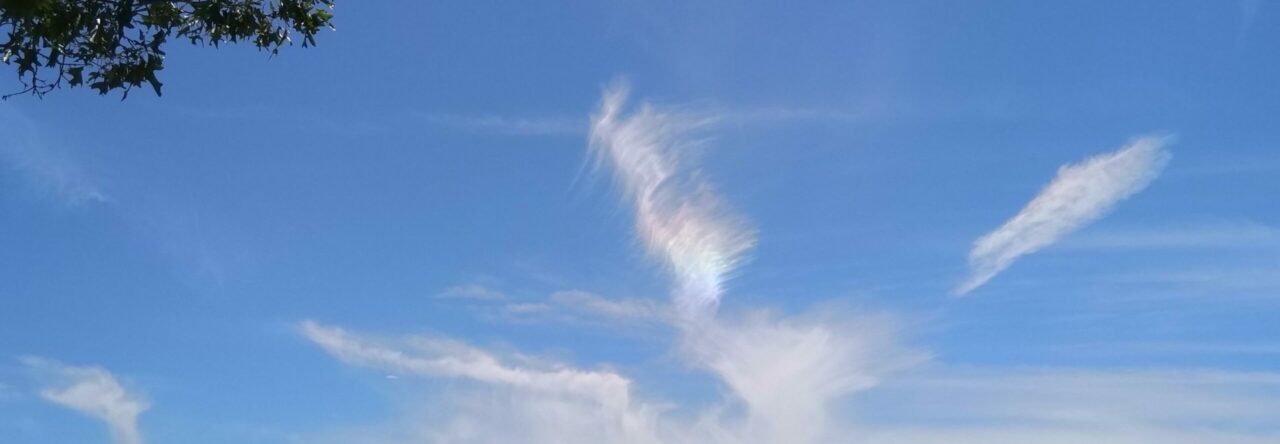Here are some projects I’m currently working on.
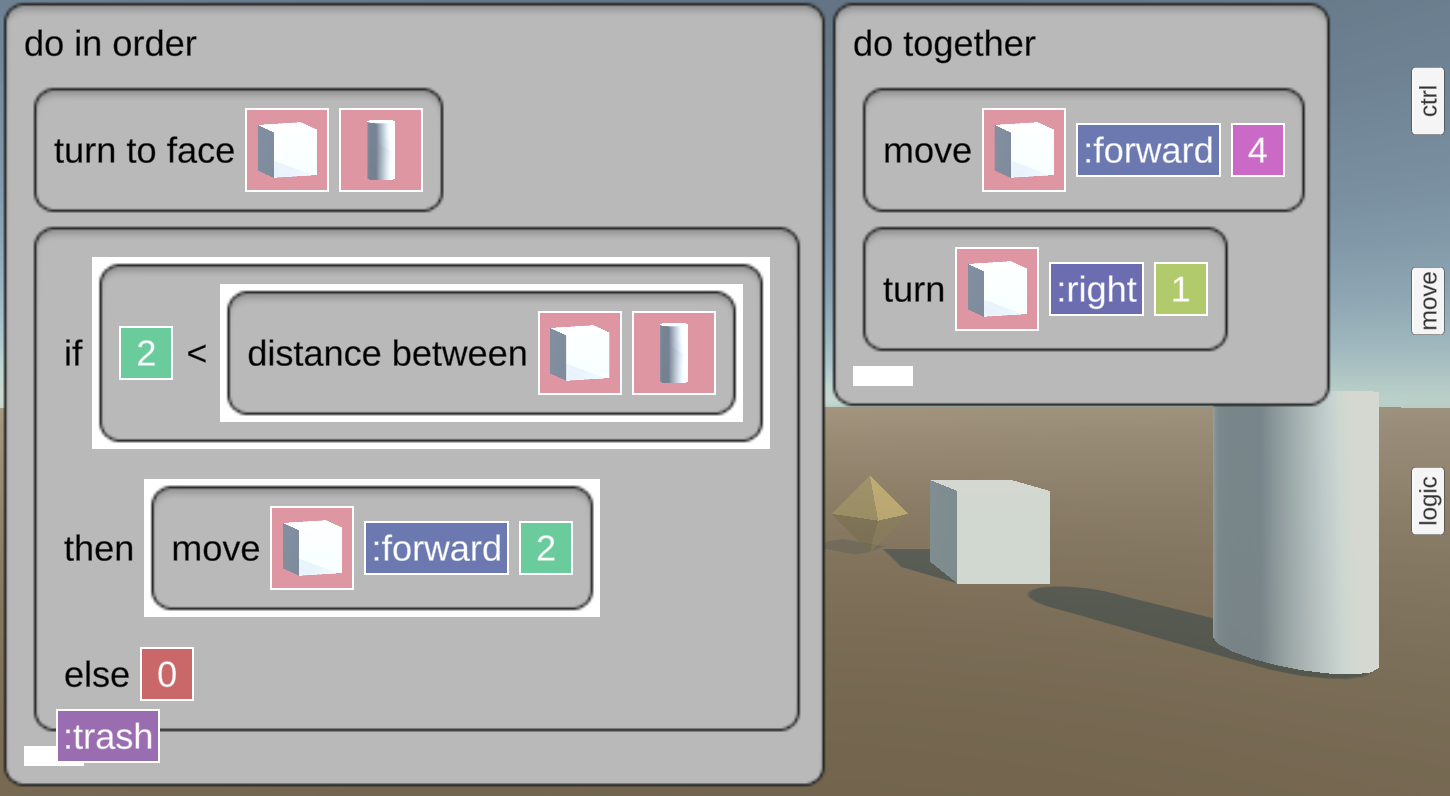
Virtual reality is a new medium for communication, art, and education. “VR Authoring for Everyone” is a software tool for novices to use to develop their own VR software from their own ideas. The block-based programming environment runs in VR or on a desktop. The programming language looks like Lisp and follows a data-oriented paradigm.
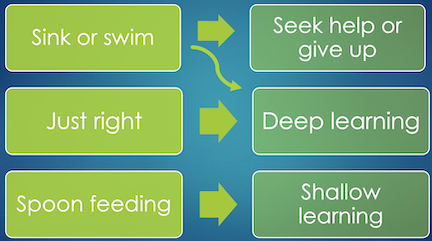
Two critical skills for succeeding in computer science are abstract reasoning and problem solving. Many students, prior to college, have lacked opportunity to hone these skills. If we are serious about diversifying the field, we need to provide support for these students. We have two published papers related to this project. “Scaffolding assignments: How much is just enough?” (download) and “With greater CS enrollments comes an even greater need for engaging teaching practices” (download).
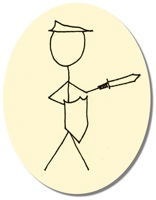
The “World’s Tiniest” series abstracts video game genres down to their simplest features. The “World’s Tiniest RPG,” 2008 (play, source), uses the format of a Facebook quiz to tell a story. In the “World’s Tiniest Platformer,” 2010 (source), the player runs and jumps to reach a castle. The “World’s Tiniest RTS” (source) is still in the design stage, and the “World’s Tiniest Arena Fighting Game” (source) is almost finished.
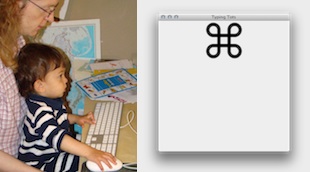
“Typing Tots” is a game to help very young children become familiar with computers. The child presses a key on the keyboard, and the program responds by speaking the name of the key aloud and displaying the key. A more advanced version that displays images is under development.
Here is a sample of projects I’ve worked on in the past.
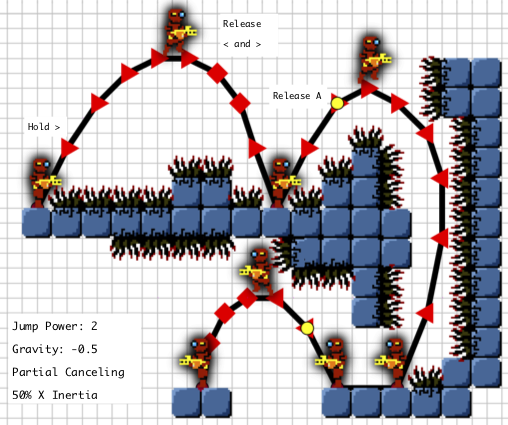
“Jumping implementation in video games,” Joseph Rioux and J. Vanderhyde, Benedictine College Discovery Day, 2014 (poster, source) and ACM SIGCSE, 2015 (abstract). Jumping is a single action in a video game allowing for limited, controllable aerial motion. This project explores the implementation of jumping in different video games.
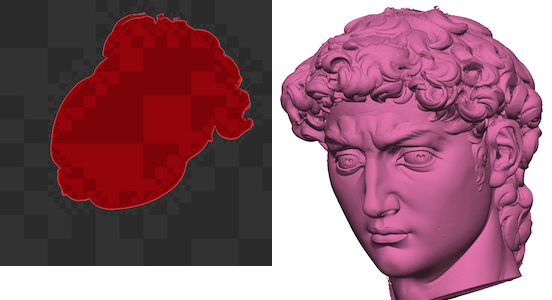
“Topological simplification of isosurfaces in volumetric data using octrees,” J. Vanderhyde and A. Szymczak, Elsevier’s Graphical Models (download, requires subscription). This is an expansion on our technique published at Vis ’03 (below). We used an octree for compression and to speed up the procedure. The procedure simplifies the topology and repairs undefined regions in laser range scans and other volumetric data sets (source).
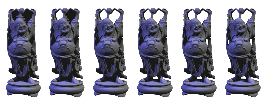
“Extraction of Topologically Simple Isosurfaces from Volume Datasets,” A. Szymczak and J. Vanderhyde, IEEE Visualization 2003 (download). In this paper we show how to automatically repair the topology of surfaces. The algorithm examines each voxel one at a time to see if removing it would create a handle.
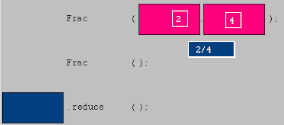
“Java Class Visualization for Teaching Object-Oriented Concepts,” H. L. Dershem and J. Vanderhyde, ACM SIGCSE 1998 (download). This program is an object-oriented experience. It lets you drag objects around and drop them into boxes to perform operations on them.
